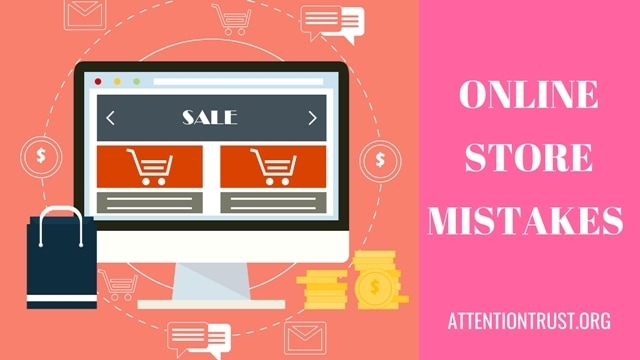When you eventually get around to fulfilling your dream of owning an online store, you might get so carried away with the concept of earning a living through this exciting opportunity, that you actually lose sight of several key components of your ecommerce website. These days, consumers are very savvy, and won’t think twice about ditching your store for another. They rarely forgive and forget mistakes, which is why it’s so incredibly important to avoid making these errors in the first place.
You might already know about all the useful business tools when starting out, but what you might not understand is all the tiny but vital things that can totally ruin your relationship with potential buyers. Don’t make any of these typical ecommerce blunders and you’ll be well on your way to becoming a successful online store owner.
A Complicated Checkout Process
Nothing – and we mean nothing – annoys customers more than getting to the checkout and finding it all too troublesome and frustrating. One example is when a website orders you to either log in as a member, or make an account, without the option of continuing as a guest and not giving your email address. Another reason for cart abandonment is when the total fee for the product is not given right away, that’s why customers are unable to pay VAT at once. When extra charges and the delivery fee is tagged on right at the very end, many customers get annoyed that this wasn’t stated right away and will abandon the process completely. Be honest and transparent, and don’t force customers to make an account with your store.
Hard to Contact
If a potential customer has a question about an item or anything else, the answers should be included in an FAQ section, or your contact details should be easy to find. If that is not the case, then you can say goodbye to that sale. Furthermore, if a customer does contact you, it is best to respond as quickly as possible, not three or four days after they have reached out to you. Imagine a potential customer is weighing up their options between two online stores: one is slow to respond, and the other is provides instant responses. The customer will naturally opt for the latter. Remember: timing is everything and customers have little patience.
Ugly Layout
In 2018, there’s no excuse for having an ecommerce website that looks like it came straight out of 1999. Easy-to-read fonts, clear and crisp images, detailed descriptions, a good amount of white space in the background, and easily discernable categories are all vital when creating the look of your online store. Most first-time ecommerce website owners opt for templates, as it makes the process quicker and simpler, plus, these generally look great and have been tested before. The templates found here are customizable, so you don’t have to worry about having exactly the same layout as someone else, and the fact that all are optimized for mobiles (absolutely vital in this day and age) is a large blessing.
No SSL Certificate
This is a big one, as not having an up-to-date SSL certificate puts both you and your customers at risk. An SSL encrypts all communication and data shared between you and your customer, ensuring that they have a safe and stress-free transaction. These days, browsers like Google Chrome will alert customers to the fact that a site doesn’t contain an SSL, so if you don’t wish to have a bad reputation straight away, then get an SSL certificate and make sure it’s always updated, as they do expire. Having one will give everyone peace of mind during the online shopping procedure.
Read Also: Antique Buyers Guide: Authentic vs. Replicas


1 Comment
Very helpful article..I am actually able to understand the important areas of an online store. Great work!!